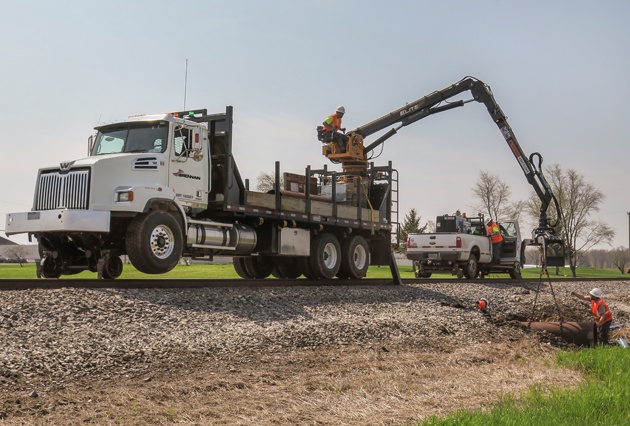Culvert Setup Made Easy: Step-by-Step Guide for Success
From choosing the appropriate culvert dimension to integrating correct water drainage actions, each step in the installment process plays a crucial function in the capability and long life of the culvert system. Remain tuned to reveal the vital steps and considerations that can make culvert installment a seamless and effective endeavor.
Picking the Right Culvert Size
Choosing the ideal culvert size is essential for making sure efficient water flow and architectural integrity in culvert installment tasks - Pad Construction. The size of the culvert directly influences the circulation capacity of water through the framework. A culvert that is too little can lead to flooding and overflow, while one that is too big might lead to decreased water rate, potentially triggering sediment buildup and blockages
To identify the ideal culvert dimension, factors such as the watershed area, optimal flow rates, and hydraulic effectiveness requirement to be meticulously taken into consideration. Estimations based upon these criteria help in selecting a size that can adequately handle the predicted water quantity while decreasing the risk of blockages and structural failure.
It is necessary to consult design standards and criteria to ensure that the chosen culvert size fulfills the task needs and neighborhood laws (Pad Construction). By picking the appropriate culvert dimension, task supervisors can enhance water flow, avoid potential issues, and enhance the overall effectiveness and long life of the culvert installment
Preparing the Setup Site
Effective culvert installation necessitates meticulous prep work of the setup site to guarantee optimal architectural assistance and performance. Before starting the installment procedure, it is important to remove the site of any kind of particles, greenery, or obstructions that can hamper the culvert's placement. Ensuring a degree foundation is important for the proper placement and security of the culvert. This may entail rating the site to create a smooth, also surface that can adequately sustain the weight of the culvert and any kind of expected tons. In addition, proper compaction of the dirt under the culvert is necessary to avoid resolving or shifting in time.
Moreover, it is essential to consider elements such as soil structure, groundwater degrees, and environmental effects when preparing the installment site. Carrying out a thorough website evaluation can help recognize any possible difficulties or risks that may impact the culvert's performance. By putting in the time to prepare the setup website correctly, you can aid ensure an effective culvert installation that satisfies structural demands and ensures long-lasting capability.
Placing the Culvert Properly

The grade at which the culvert is positioned is essential for maintaining an appropriate slope for water circulation. A progressive incline assists stop pooling and promotes efficient drainage. Furthermore, the culvert needs to be oriented properly to guarantee that the inlet and electrical outlet remain in the correct places. This positioning is essential for the culvert to function efficiently in taking care of water circulation.
Backfilling and Condensing the Soil
Appropriate backfilling and compaction of the dirt around the culvert is important to make certain stability and protect against prospective concerns in the future. Once the culvert is properly positioned, the following important action is to backfill the location around it with ideal material.
After putting the backfill product, it is necessary to compact it in layers of uniform density. Using a compactor or a mechanical meddle, compact the soil carefully to avoid damaging the culvert. Compaction helps in minimizing the opportunities of settlement and ensures uniform support around the culvert. It is important to compact the soil evenly on all sides of the culvert to maintain its structural integrity.
Appropriate backfilling and compaction check here not only offer security to the culvert however likewise help in stopping soil erosion and preserving the long life of the culvert system.
Guaranteeing Correct Drainage Integration
Integrating effective drain options plays an essential function in the overall functionality and durability of culvert setups. Correct drain combination is crucial for handling water circulation, avoiding disintegration, and guaranteeing the architectural honesty of the culvert system. To accomplish this, it is essential to develop a thorough drainage plan that takes into consideration elements such as the quantity of water anticipated, the topography of the location, and the kind of dirt existing.

In addition, including features like disintegration control measures, such as riprap or greenery, can even more improve the efficiency of the drain system. By very carefully intending and executing these drain options, culvert setups can work effectively and stand up to the test of time.
Conclusion
Finally, correct culvert installment is crucial for keeping published here reliable drain systems. By choosing the right culvert dimension, preparing the installment website, putting the culvert correctly, backfilling and condensing the soil, and making sure appropriate drainage assimilation, success can be attained. Complying with these steps will certainly aid ensure the long life and performance of the culvert, eventually adding to the total success of the drain system.